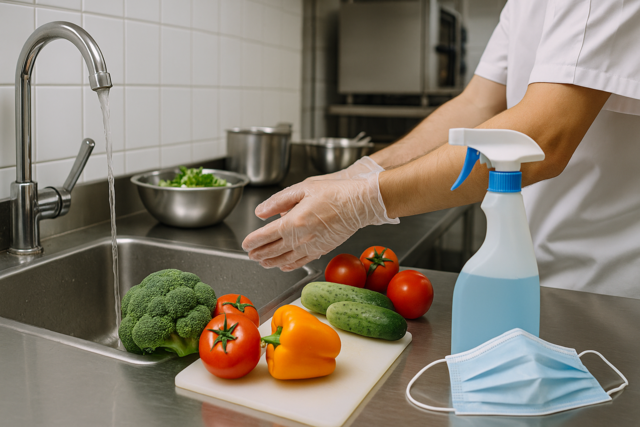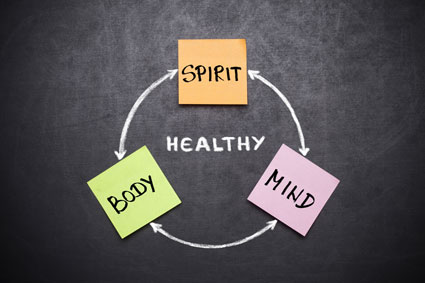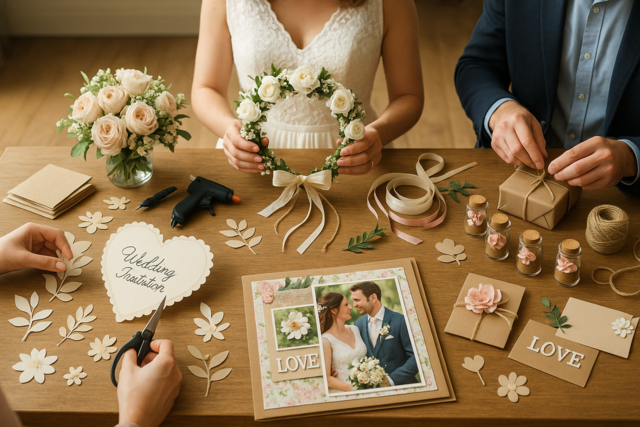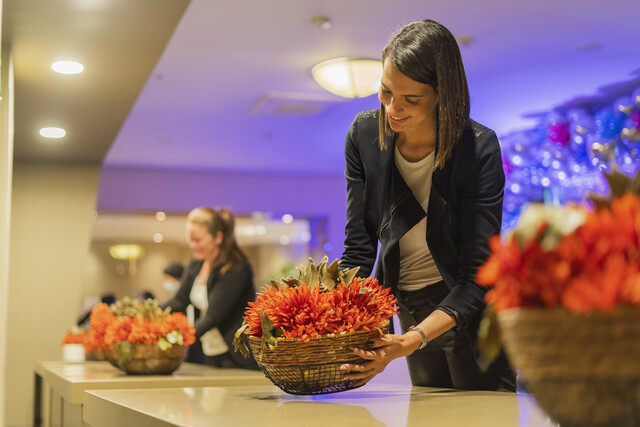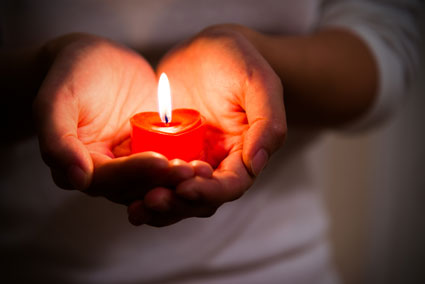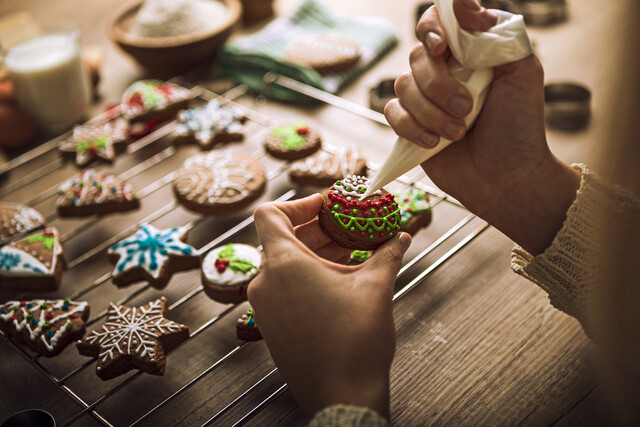All tea comes from the leaves of one type of plant: the camellia sinensis. However, the way these leaves are processed and blended, and the region of the world in which they are grown, produces an astounding variety of flavors. What we commonly call "herbal teas" or tisanes, do not contain camellia senensis leaves at all, but are made of a blend of other herbs, flowers, and grasses.
Types of tea
-
White: White tea is as close as you can get to pure tea leaves unless you grow your own Camellia sinensis plants. White tea is usually made from young leaves or buds of the plant. These leaves are not fermented at all (just harvested, steamed, and dried), and the hot beverage brews a very light color with little caffeine. White tea has all the antioxidants and health benefits of regular tea with a lighter flavor and less caffeine. Long ago, white tea was known as the Emperor's drink in China, and it was the exclusive privilege of the ruler. Today, white tea is more widely available, but some varieties are still quite precious, like Silver Needle, which is made from handpicked buds that are only harvested two days out of the entire year.
-
Green: Most green tea is grown in China or Japan, and it is the most popular type of tea in Asia. After leaves are harvested, they are heat-treated to stop the fermentation process. As a result, green tea has less caffeine than fully fermented black tea and far less caffeine than coffee. Chinese black tea is dry-roasted, then rolled and dried before packaging. Japanese green tea, on the other hand, is steamed. This difference gives Chinese green tea a pale, yellow-green color and roasted taste, while Japanese green tea is a little grassier tasting with a deeper green color. The way the tea plants are grown (sun or shade, type of soil, etc.) produces subtle differences in flavor. After harvest, the teas can be mixed with different herbs, flowers or fruits to produce different scents and flavors.
-
Oolong: Sometimes called Wulong or Wu Long, this type of tea is frequently served in Chinese restaurants. Once growers harvest these leaves, they intentionally shake the leaves to bruise the edges. The leaves are then allowed to ferment for a short time, and as they do, the bruised edges of the leaves take on yellowish and red colors. After a little fermentation, the leaves are pan-roasted (like Chinese green tea), dried, blended, and packaged. Two well-known types of oolong are Chinese (which is only fermented a short time, and produces a mild-flavored tea) and Taiwanese (which is fermented longer and results in a more robust flavor. Both types have a fraction of the caffeine in a cup of coffee. Although you can pick up a box of Oolong tea at most grocery stores, there are more exotic varieties. For example, Monkey-picked oolong tea was so named because a group of Buddhist monks trained monkeys to pick leaves from the very tops of wild tea trees. Monkey-picked is considered the best oolong tea.
-
Black: Black tea goes through a full fermentation process before it is roasted, dried, and packaged. It has the most caffeine of all the tea varieties, it is the most familiar tea in the U.S., and is widely available around the country, either as loose tea or in tea bags. There are many premium black tea blends, like pu-erh teas, which are made of leaves fermented in caves for up to 15 years!
-
Herbal: Herbal teas do not contain the leaves of the Camellia sinensis, so technically speaking, they are not teas at all, but tisanes or herbal infusions. These drinks may include flower blossoms, herbs, dried fruit and fruit peels, among other things.
-
Rooibos: This naturally sweet tea is made from the leaves of the South African Red Bush. Like traditional tea, its leaves may be fermented or not, and are frequently mixed with fruits, flower petals, and even traditional tealeaves.
-
Maté: This drink is made from the leaves and stems of a South American plant called yerba maté that are blanched, dried, aged and cut. The final product has a natural stimulating effect that people describe as similar to coffee, but without the jitters.
-
Herbal infusions: These teas are made from dried fruits, rose hips, flower petals, citrus peels, herbs, spices, ground-up nuts and a variety of other ingredients. Herbal infusions have been used in traditional Chinese medicine for ages, and today, many herbal infusions have purported health benefits. For example, chamomile is supposed to be relaxing, peppermint is supposed to aid digestion, ginger is reputed to help fight off colds and easy achy joints, and St. John's Wort is thought to improve mood.
Tea pairings
The best way to discover what teas work with which foods is to actually try them together, but here are some general guidelines:
-
Assam: This full-bodied tea comes from the Assam Valley in India, and it pairs well with beef and dark chocolate.
-
Ceylon: This medium-bodied and citrusy tea comes from Sri Lanka, and it pairs well with vegetables, cream cheese, carrot cake and cheesecake.
-
Darjeeling: This light afternoon tea comes from northeastern India, and some consider it the "champagne of teas." It pairs well with chicken, fresh fruit, dark chocolate, fruit pastries and carrot or cheesecake.
-
Green: This light, clean-tasting tea pairs well with fresh fruit.
-
Lapsang Souchong: This is a black tea from the Fujian province of China. During the drying process, the leaves are finished off over a pine fire, which gives the finished tea a smoky aroma and flavor. This powerful tea pairs well with pork, beef and spicy foods.
-
Oolongs: These teas pair well with seafood, and with desserts containing apricots, bananas, coffee or mocha flavors, and with pecan pie.
-
Yunnan: From the Yunnan province of China, this tea pairs well with milk chocolate.
Selecting Teas and Planning the Food
With so many teas in the world, it can be a little overwhelming to decide what to serve for your tea party. As with most other elements of entertaining, part of this decision will depend on your budget and the number of guests you expect. First off, remember that this is a tea party, and therefore the focus should be on the tea itself. Some hosts choose to offer guests an array of tea bags from which guests may brew their own tea in their individual cup. While this is certainly the easiest approach for the host, who only has to provide a supply of hot water, it may not produce the best tea.
When selecting teas, think of your guests. If you are hosting a child's birthday tea, provide a kid-friendly, caffeine-free herbal tea like a strawberry lemonade blend. A child's party is not the time to spring for rare Chinese Tieguanyin tea, the price of which can reach $1,500/lb. Go for something simple, slightly sweet and likable for children. Brew the tea in a pot so that the kids don't have to pour near-boiling water over their own tea bag. Allow ample time after brewing the tea and removing the bags or leaves before serving to reduce the risk of burned tongues.
For adults, consider offering a selection of two (or three) different brewed teas. Pick one "safe" tea--the kind that is familiar and approachable. An example might be a basic black or green tea without additional flavorings. This would be the tea of choice for the tea novice, or for someone who might be allergic to certain tea additives. Your second tea can be a little more adventurous, like a black forest black tea that contains chocolate, cherry and hibiscus. The third tea might be a spicy option, like a peppery Chai tea.
Keep in mind that the tea will be served with food, so you should either select a menu that pairs well with your chosen tea, or a tea that pairs with your menu. For example, Earl Gray tea with its bergamot and lemony flavorings would clash with a dairy-based dish like a cheese tray or cheesecake. Lemon bars, however, would pair wonderfully with Earl Gray. A chocolate-orange tea would be unpleasant with tuna salad sandwiches, but lovely with a raspberry cheesecake.
With a small group of friends, and if you have the inclination, it may be worth your while to spend some time finding an interesting tea variety, learning about its history, and then telling the story of the tea to your guests. This is most practical with a group of 6-10 people, but not feasible with a gathering of 100.
The best way to choose a tea for your party is to try it yourself. Visit specialty teashops, try different types of tea, discover what you like and think about what you would like to share with others.
For more information
If you would like personal attention and lots of individualized information about teas, take a trip to a specialty teashop or a good-sized farmer's market with a tea vendor. People who specialize in selling, making and blending tea can provide lots of useful information about their products and how to use them.
Tea preparation guidelines
At the end of the day, it's pretty simple: some leaves and a little hot water. However, at its most elaborate, the making of a perfect pot of tea can take several hours. Certain types of tea prefer hotter or cooler water and shorter or longer brew times. Fortunately, specific instructions are usually included on the package for each kind of tea.
One decision you will have to make about your tea is whether to use tea bags or loose leaves of tea. There are advantages to both: Tea bags are certainly the most convenient option. Today, 95% of tea sold in the U.S. comes in a bag. You don't need any special equipment, just a cup and a teakettle. With a tea bag, you can make a cup anywhere, any time at all. The thin little tea bags don't provide much room for the leaf to expand to its full size, so producers compensate by using smaller cuts of tealeaf. The tiny leaf bits brew faster with less water circulation, but they also have less tea flavor and more bitter tannins. In technical terms, these little leaves are called "fannings" or "dust." You might think of them like the little crumbs of potato chip that are left at the bottom of the bag after eating all the full-sized chips. These little fannings are the lowest grade of tea possible, and it is these that are scooped into tea bags for sale. Some varieties of bag are very constraining, and they keep liquid from flowing freely so that the tea can brew properly.
Loose leaves, on the other hand, require more of a production. You have to put the leaves in something, like a tea infuser or strainer, then put the tea in a pot, and remove the leaves when they have brewed long enough. You could just pour the leaves straight into the pot, but then you would have bits of tealeaf floating around in your drink. New equipment now on the market makes loose-leaf brewing much simpler. Some specialty teashops make single-use tea bags into which you can scoop your own high-quality loose-leaf tea. You can also buy special teapots that come with their own tea infusers, or you can just buy a separate tea strainer and use it in any teapot you like.
Presentation
Since tea parties can be simplicity itself, you have a great opportunity to provide a delightful presentation for your tea. The approach that you take depends on the size of your party.
For a very large group, you may be compelled to offer two urns of heated water that your guests will use to brew their own tea from bags. In this case, make sure that the table holding the urns is nicely arranged. Put a cloth drape over the table (under the urns). Arrange the cups, spoons, and saucers attractively. Offer slices of lemon, sugar cubes (or packets), and honey at the same table.
Even with a large group, you can prepare individual teapots and set them on each table. If you choose this approach, you can select a variety of teapots from thrift stores, or raid the cupboards of your friends. The pots don't have to match, but they should work together (avoid placing hideously clashing pots at the same table), and if you have different types of tea at each table, you can indicate the difference by setting a place card with a name and brief description in front of each pot.
For smaller parties, you can set a small table with all your tea equipment. In days gone by, hosts used to have teacarts on which they stored teapots, cups, saucers, and accompaniments. You don't have to rush out and buy a specialized tea cart, but you can convert a small portable table to this purpose--for example, if you have a little table with wheels (the type sometimes used for computers, printers and microwave ovens), you can cover it with a table cloth or a few yards of fabric and produce an instant tea table. You can also use coffee tables or end tables for the same purpose.
Accompaniments
Be sure to present the things people might like to use in their tea in the close vicinity of the tea itself. In general, milk, lemon, sugar and honey are popular additions to tea. Brown sugar can also be a nice touch. Cream is not generally served with tea because it is so heavy that it overwhelms the delicate flavor of tea.
Although you certainly can just set out a bowl full of sugar packets and Sweet-n-Low, a tea party is a great opportunity to get creative with the presentation of these add-ons. You can buy real sugar cubes or rock sugar and stack these in a decorative bowl. Slice a lemon paper-thin and arrange the circles on a plate of contrasting color. Pour the milk into a small pitcher and set brown sugar into a small bowl with a lid. Provide small serving utensils for all the accompaniments: little tongs for sugar cubes and lemons, small spoons for the sugar. Set teaspoons out with the cups and saucers.
If you have a table set up for tea service at a large party where guests will be opening packages (tea bags) or generating any kind of trash, make sure you provide an easily accessible and obvious trash receptacle to keep people from leaving empty sugar wrappers on the table for those that come behind. Always delegate at least one person to continuing cleanup. Their sole job should be to remove trash and spills at the table so that it continues to look as attractive as it did for the first person through the line.
The Food
The most important aspect of a tea party is the tea. Once you have selected an assortment of teas, you can start thinking about the food. First, decide whether you are having just a dessert tea, a light tea, or a full tea. Then think about how many guests you expect and what time of day the party will be.
Savory and Sweet
Unless if you are planning a dessert-only tea, your basic guideline of menu planning is savory and sweet, meaning you should include a balance of somewhat substantial (finger sandwiches, cheese and quiches) and somewhat dessert-like (scones, cakes, cookies) offerings.
When you select food items, think about how the colors and textures of the food will work together. For example, if you were to select a white cheddar cheese, finger sandwiches with chicken salad on white bread, vanilla scones and sugar cookies for your tea, the result would be a very bland, vanilla-colored buffet or plate. Simple changes can add color and interest to the assortment, like serving sliced red pepper alongside the cheese, using wheat bread and green lettuce in the sandwiches, blueberries in the scones and a colored frosting on the cookies.
When you think about texture, consider crunchy, smooth, chewy, crispy, juicy, solid, hard, soft, creamy, fatty, and so on. Your menu should include a balance of textures. A quiche is soft, crackers are crunchy, biscuits are flaky, pudding is smooth, and fruit is juicy. Also keep in mind that, as a general rule, younger people tend to enjoy crunchy foods more than older people. So if your guests are teenagers, it's okay to have a higher proportion of crackers and hard foods, but the older people get, the more they tend to appreciate softer items like cheese and quiche.
Dietary concerns
You can't possibly accommodate for every known diet restriction, especially in a larger party. But if you have a small gathering of friends, you should make the effort to find out if anyone has a severe food allergy (like nut, milk, wheat or soy) and make sure that items containing those allergens are clearly marked. Try not to repeat one type of ingredient in several dishes. For example, if you put nuts in the scones, do not add them to the salad.
It's also a good general practice with any party to provide a wide enough variety of foods that most people can find something: for example, a fruit and vegetable tray or a meatless salad will satisfy vegetarians, the wheat-free and the health-conscious. Making sure that at least one of your desserts is nut-free will provide at least one option for those with nut allergies.
People with extremely restrictive diets (like strict vegans) are often resigned to the fact that they won't be able to eat any food they did not prepare for themselves, but it a good host at least makes an effort to provide refreshments their guests can enjoy.











